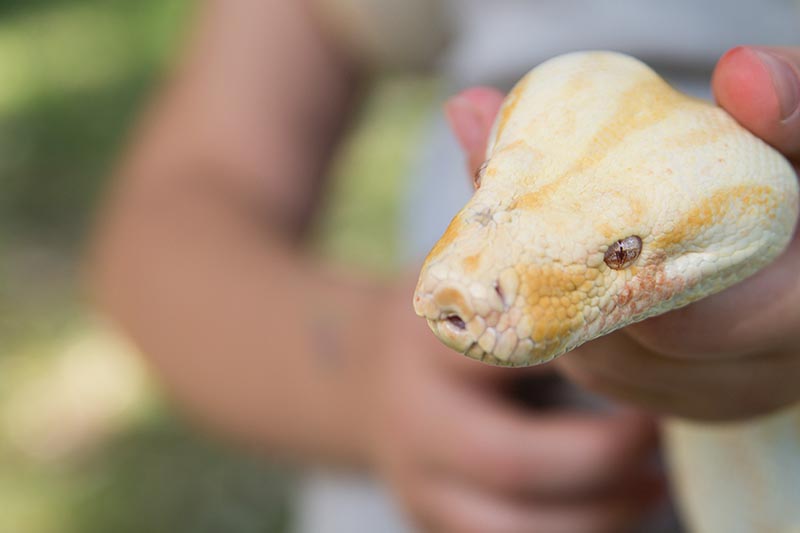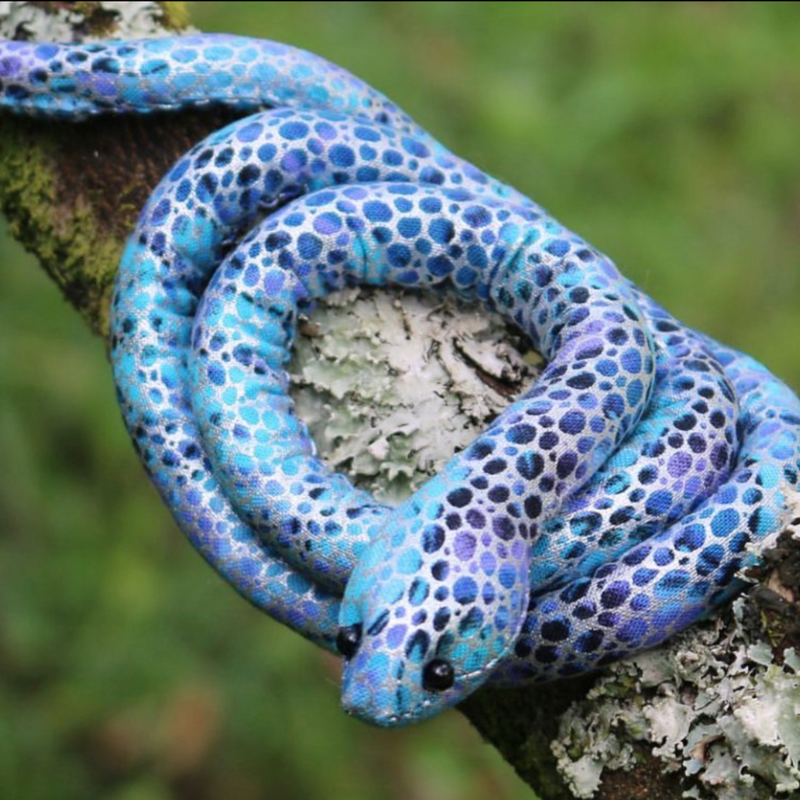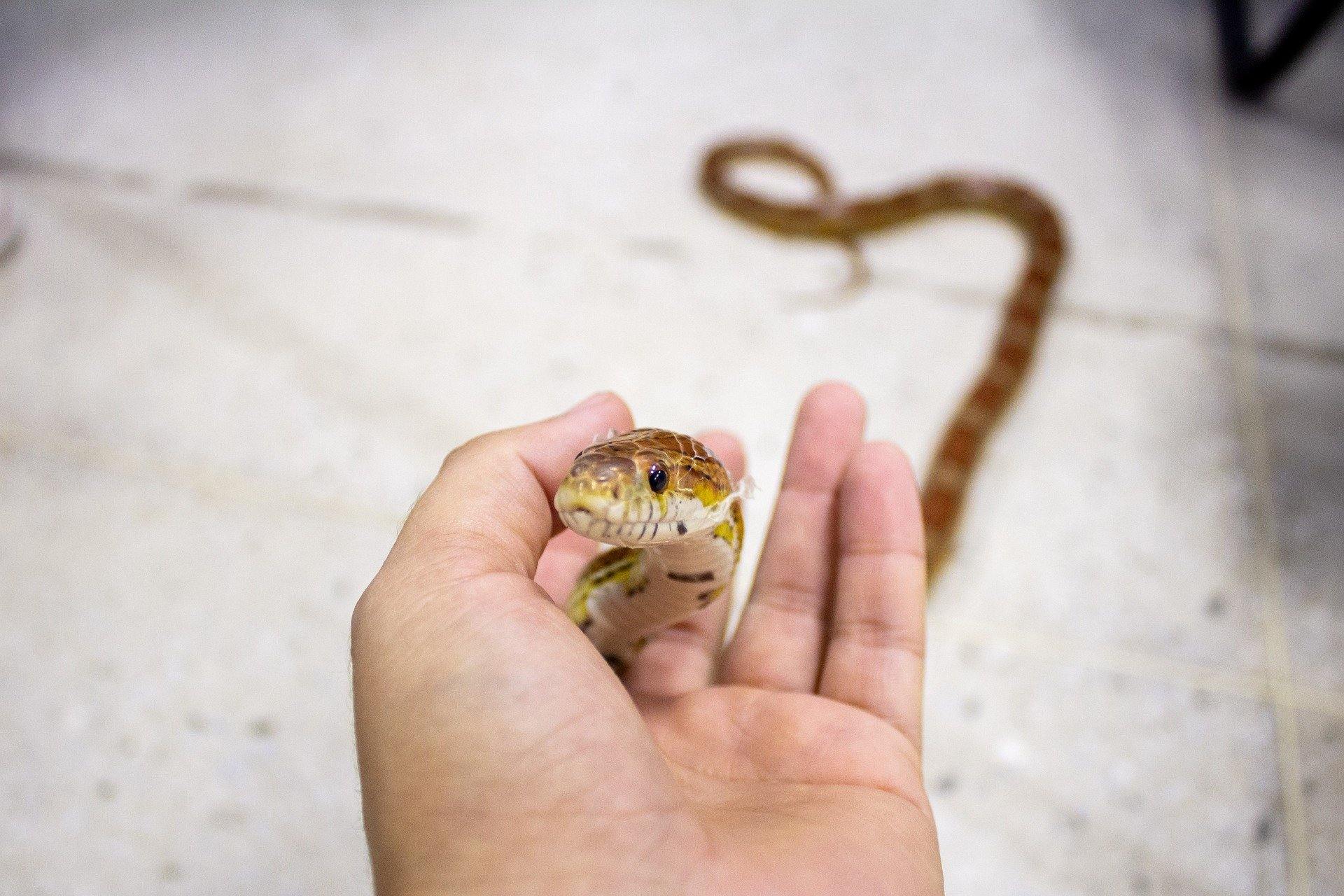Unveiling Snake Option: Snake for Sale Galore!
Unveiling Snake Option: Snake for Sale Galore!
Blog Article
Just How to Produce the Perfect Habitat for Your Animal Snake
Creating the ideal environment for your animal snake is critical to guaranteeing its wellness and wellness. From selecting the ideal enclosure to giving the ideal temperature and moisture degrees, there are numerous aspects to think about when setting up a habitat that imitates your snake's natural surroundings. By understanding the details demands of your serpent varieties and carrying out the required elements in its environment, you can create a space where your pet can thrive. Allow's explore the essential parts that enter into making the ideal home for your slithery companion.
Picking the Right Enclosure
The unit offers as the serpent's main habitat, impacting its overall health and actions. A basic regulation of thumb is to provide an environment that is at least as long as the snake's size and vast sufficient for it to stretch out easily.
In addition, the material of the enclosure is vital. Rooms can be made of glass, pvc, timber, or plastic, each with its disadvantages and benefits. Glass rooms are popular as they provide good presence, while plastic enclosures are light-weight and simple to tidy. Wood and PVC rooms offer excellent insulation, which is important for managing temperature and moisture levels within the habitat. Eventually, the enclosure ought to imitate the serpent's natural habitat as carefully as feasible to ensure its health and joy. snake for sale.
Establishing Up Temperature Level and Humidity Levels
In order to offer a conducive living environment for your animal serpent within the chosen unit, attention to keeping optimal temperature and humidity degrees is paramount. Serpents are ectothermic animals, indicating they rely upon outside resources to manage their body temperature level. For the majority of serpent varieties, the optimal temperature level varieties between 75-85 ° F(24-29 ° C) on the colder end and 85-90 ° F(29-32 ° C) on the warmer end. To achieve this gradient, you can use hot pad, heat lamps, or ceramic heating systems. It is important to place thermometers at both ends of the unit to keep track of the temperature level frequently.
The proper humidity level differs depending on the serpent types, with a lot of requiring degrees in between 40-60%. By vigilantly readjusting and keeping an eye on temperature and moisture levels, you can develop a secure and comfortable environment for your cherished pet serpent.
Offering Adequate Concealing Areas
Ensuring the accessibility of appropriate hiding spots is essential for producing a worry-free atmosphere for your pet serpent. To resemble their all-natural environment, give at least two hiding areas in your serpent's unit-- one on the warmer side and one on the cooler side.

Choosing the Appropriate Substratum
To develop an appropriate environment for your pet dog serpent, what elements should be considered when selecting the proper substrate? Picking the best substratum for your family pet snake is crucial for keeping its health and health. When selecting a substratum, a number of factors require to be considered.
Firstly, the substrate must mimic the snake's all-natural setting as very closely as possible. Different snake species have various environment choices, so it is vital to investigate your particular snake's natural environment to choose a proper substratum. For instance, desert-dwelling serpents might call for a sandy why not check here substrate, while forest-dwelling snakes might favor a much more humid substrate like cypress compost or coconut husk.
Opt for substrates that are simple and non-toxic to clean to maintain a hygienic environment for your animal snake. By carefully taking into consideration these variables, you can develop a comfortable and secure environment for your pet dog snake.
Offering Appropriate Lighting and Home Heating

When it comes to lights, snakes have specific illumination needs to mimic their all-natural atmosphere. Ultraviolet (UV) lights may be required for certain serpent types to assist with calcium absorption and vitamin D synthesis. However, not all snakes need UV lights, so it's necessary to research your details snake types' demands.
To provide the best equilibrium of lighting and home heating, consider making use of a mix of overhanging heating lamps, hot pad, and thermostats to control temperatures properly. Ensure that your snake's environment has a temperature slope, allowing it to move in between warmer and cooler areas as required. snake for sale. By supplying proper lights and heating, you can develop a comfortable and healthy atmosphere for your pet dog snake
Verdict
Finally, creating the ideal environment for your pet dog snake entails selecting the right unit, establishing ideal temperature and humidity degrees, providing sufficient concealing spots, picking the ideal substrate, and offering proper illumination and home heating. By adhering to these standards, you can ensure that your snake has a comfortable and healthy atmosphere to prosper in. Bear in mind to routinely monitor and readjust the environment as needed to fulfill your serpent's specific needs.
To create an appropriate environment for your pet snake, what factors should be taken into consideration when choosing the appropriate substratum? Various snake species have different environment choices, so it is vital to investigate your particular snake's indigenous atmosphere to choose a proper substrate. Desert-dwelling snakes might need a sandy substratum, while forest-dwelling snakes may choose an extra moist substrate like cypress mulch or coconut husk.
Not all snakes need UV lights, so it's crucial to investigate your specific serpent types' requirements.

Report this page